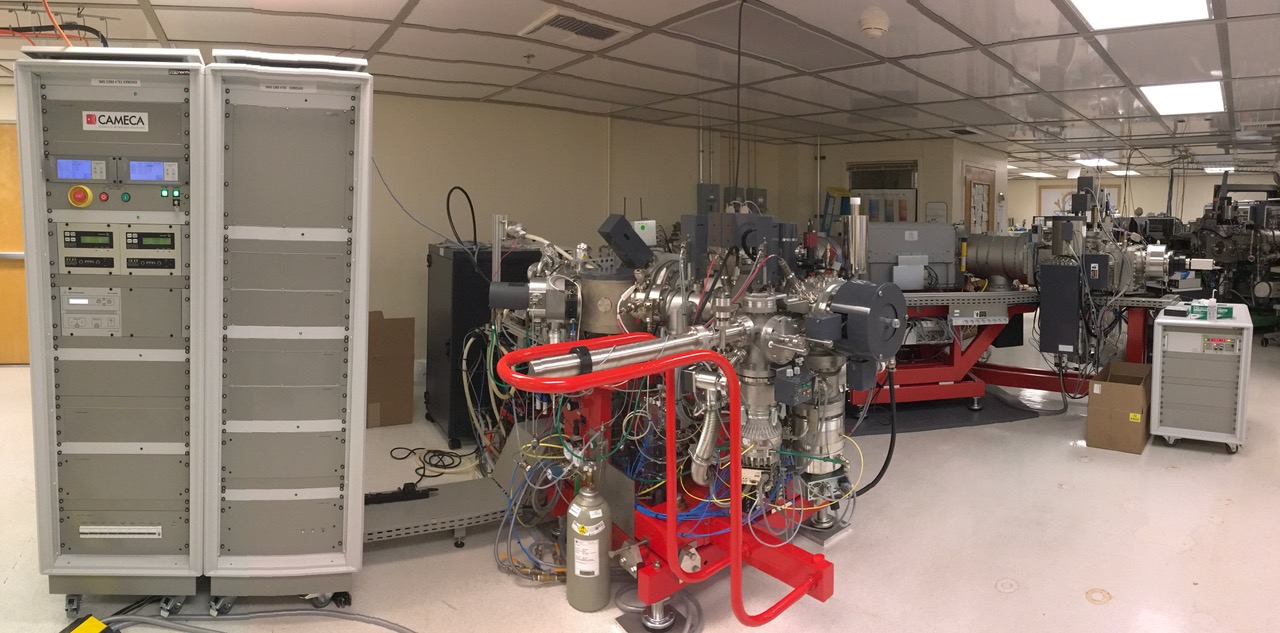IMS-1290

UCLA SIMS Laboratory
The CAMECA-ims 1290 ion microprobe is the last addition to the UCLA SIMS lab. This instrument was delivered in August 2015 and then was commissioned in Dec 2015. The mass spectrometer part of the ims-1290 is identical to that of the CAMECA ims-1280HR, which has improved electronics and features much higher mass resolution (up to flat-top, M/∆M = 40,000) compared to our 25-year old ims-1270. What distinguishes the 1290 from a regular 1280HR is the replacement of the duoplasmatron source with a Hyperion-2 RF oxygen plasma source manufactured by Oregon Physics. This RF source can produce a mass-filtered ion beam that can be focused to a spot as small as sub-micron. The theoretical beam density for a Hyperion-2 source is ~10 times that of a duoplasmatron, and about an 8-time improvement has been obtained on our instrument (Fig 1). Such a beam density would allow for high precision isotope measurements under high spatial resolution.
In addition to the improvements on the instrument hardware, sample holders have also been modified. The new sample holders that came with the ims-1290 have a larger opening (22 mm in diameter; the old ones are 20 mm in diameter), which eases the geometric (X-Y) effects that affect the reproducibility of measurements. Oxygen and silicon isotope analyses have been performed in multicollection + peak-hopping mode on a flat glass slide on the ims-1290, and results (Fig 2a, b) show that highly reproducible 18O/16O (0.26‰, 2SD) and 30Si/28Si (0.46‰, 2SD) isotopic ratios can be obtained over 2-cm in both X and Y directions (except oxygen isotopic ratios at +10 mm in Y).